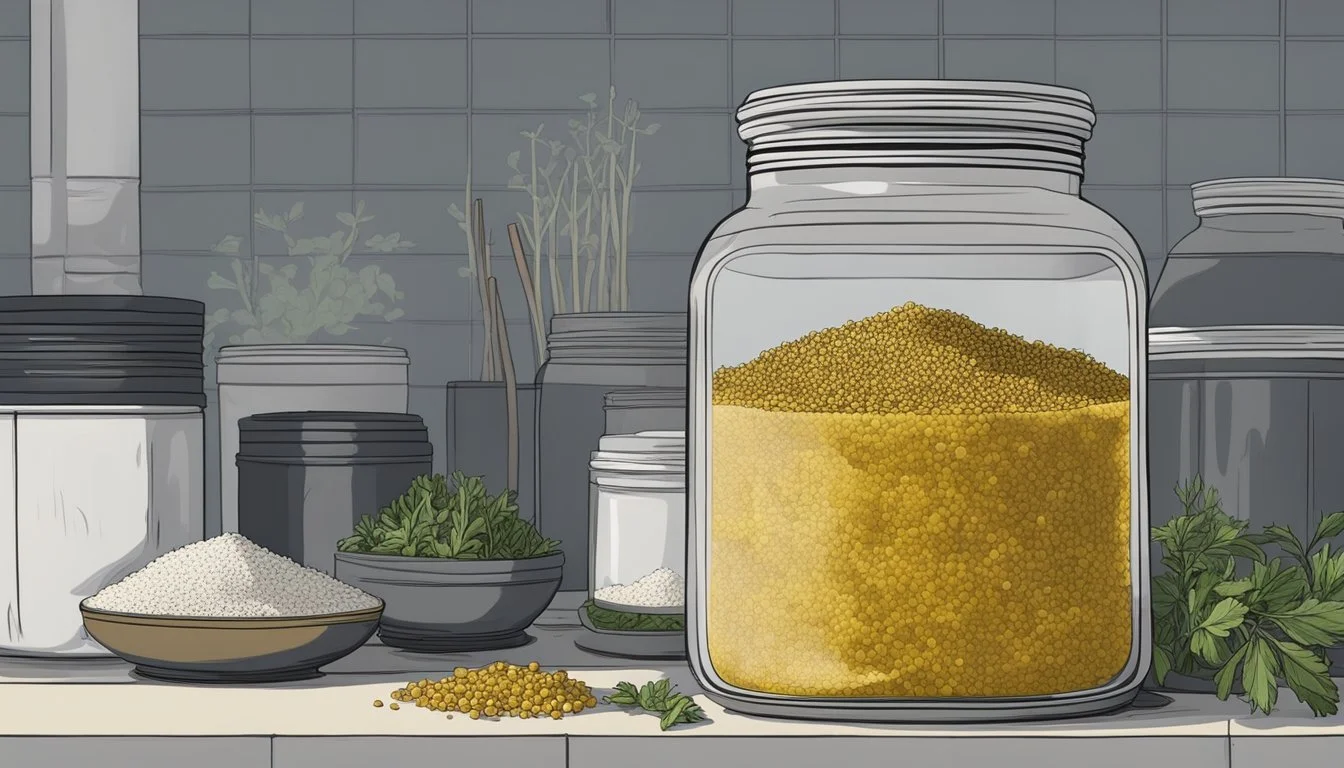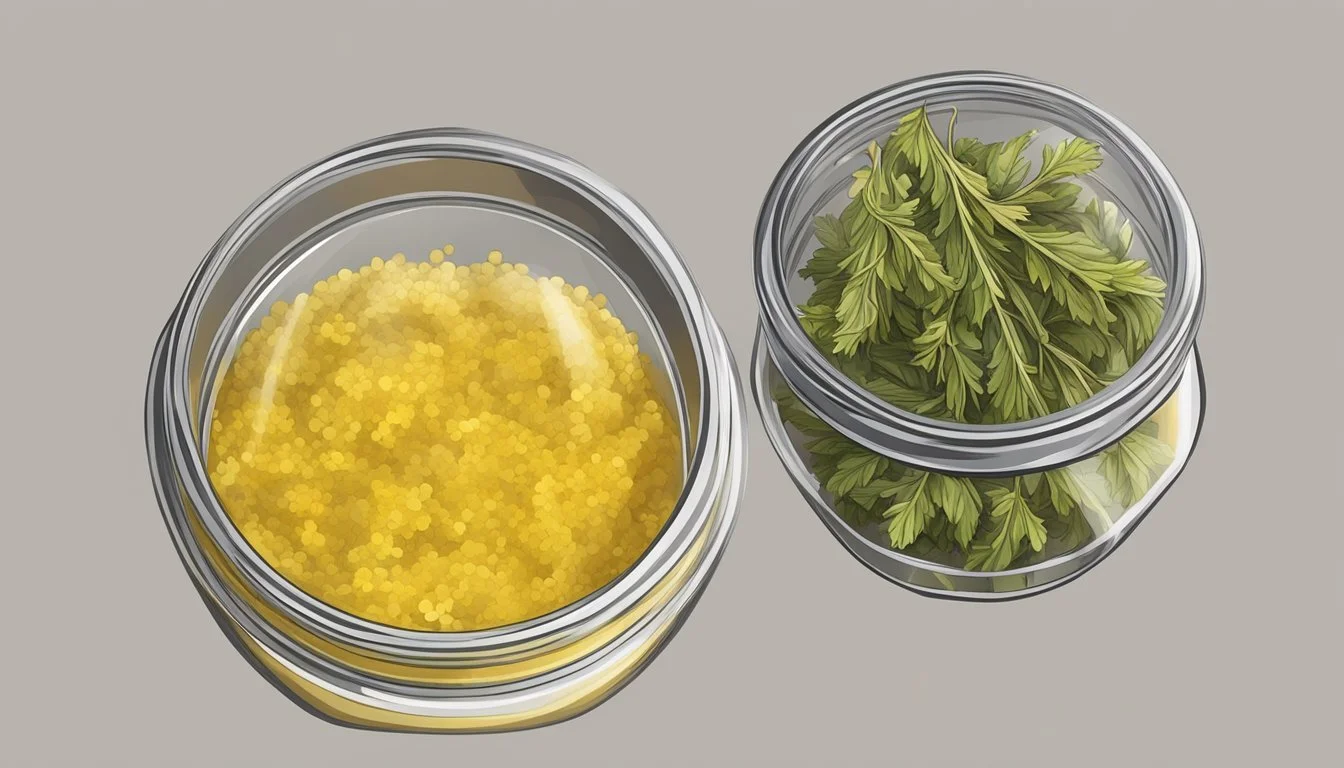How to Ferment Zha Cai
Mastering Sichuan Pickled Mustard Plant Stem
Zha cai, a Sichuanese culinary delight, is a savory preserved mustard stem widely celebrated in Chinese cuisine. Originating from the banks of the Wujiang River in Chongqing, China, this specialty encapsulates the bold flavors of the region through an intricate process of fermentation. The art of fermenting Zha cai entails a meticulous progression from salting and drying, to seasoning with regional spices — most notably red chili paste, which imparts varying degrees of heat.
The practice of fermenting Zha cai is deeply rooted in Chinese culinary traditions, emphasizing the importance of both technique and patience. High-quality mustard plant stems are carefully selected and hand-prepared for the fermentation process, where they transform into a crunchy, tangy, and versatile condiment. The fermentation not only enhances the flavor profile but also extends the shelf life of the vegetable, allowing it to be stored and enjoyed over a long period.
In modern Chinese cuisine, Zha cai is celebrated for its adaptability, enhancing a range of dishes from simple rice pairings to complex stews and stir-fries. Its unique taste, characterized by an amalgamation of sour, sweet, salty, and spicy notes, brings depth to meals and has cemented its status as a beloved ingredient in Sichuan cooking and beyond.
Historical Background
Zha cai, a renowned Sichuan preserved vegetable, has deep historical roots tied to the cultural and culinary practices of China, especially within the Chongqing region. The process of fermenting mustard plant stems into Zha cai reflects not only a traditional preservation technique but also a flavor profile integral to Sichuan cuisine.
Cultural Significance
Zha cai holds significant cultural value in Sichuan cuisine, with its unique flavors emblematic of the region's gastronomic heritage. The tradition of pickling and fermenting vegetables such as mustard stems dates back centuries and represents resourcefulness in food preservation. It is customary for Zha cai to be an accompaniment in meals, enhancing dishes with its distinct, piquant flavor.
Regional Variations
While Zha cai is synonymous with Sichuan, the art of fermenting mustard plant stems exhibits regional variations, particularly in Chongqing where it originated. Here, the fertile banks of the Wujiang River provide ideal conditions for cultivating mustard plants that are then transformed into a variety of Zha cai flavors. Commonly referred to as Pao Cai in neighboring areas, fermented vegetables display local distinctions in taste, spice level, and fermenting methods, illustrating the diversity across different Sichuan communities.
Understanding Zha Cai
Zha Cai, a preserved mustard stem, hails from Chongqing, China, and is celebrated for its unique taste and texture. This section explores Zha Cai's definition, uses in the kitchen, and its nutritional contribution.
Defining Zha Cai
Zha Cai (榨菜) is the stem of the Brassica juncea plant, which undergoes a preservation process involving salting, drying, and fermenting with chili paste. It results in a product that is crisp and boasts a salty and sometimes spicy flavor profile. Zha Cai might also be known to English speakers as Sichuan vegetable or Szechwan preserved mustard green.
Culinary Uses
In the kitchen, Zha Cai is incredibly versatile. Typically found in tins, it should be rinsed and soaked to reduce its saltiness before use. It can be cut into strips or cubes and utilized in a variety of dishes including:
Stir-fries
Soups
Rice and noodle dishes
As a condiment, complementing the main protein dishes
The crunchy texture of Zha Cai adds a delightful contrast to softer components within a meal, elevating the overall dining experience.
Nutritional Profile
Zha Cai brings not only flavor but also a range of nutritional benefits. Here is a quick glance at its nutritional content per 100 grams:
Nutrient: Calories
Amount: Low
Nutrient: Carbohydrates
Amount: Low
Nutrient: Fat
Amount: Low
Nutrient: Saturated Fat
Amount: Low
Nutrient: Protein
Amount: Moderate
Nutrient: Cholesterol
Amount: None
Nutrient: Fiber
Amount: High
Nutrient: Vitamin A
Amount: Present
Nutrient: Vitamin C
Amount: Present
Nutrient: Calcium
Amount: Present
Nutrient: Iron
Amount: Present
Nutrient: Potassium
Amount: Present
Zha Cai is a low-calorie food rich in fiber and contains probiotic properties, promoting gut health. It is a good source of vitamins and minerals such as calcium and iron, complementing a balanced diet. However, due to its preservation process, it can be high in sodium.
Preparation Essentials
In fermenting Zha cai, one must meticulously select quality ingredients and have the appropriate equipment on hand for successful preservation. These preparatory steps are crucial to ensure both the safety and flavor profile of the final product.
Required Ingredients
The essential ingredients for fermenting Zha cai are as follows:
Salt: Vital for curing, use sea salt to draw out moisture and aid preservation.
Sugar: While optional, rock sugar can be added to balance flavors.
Sichuan Peppercorn: Provides the characteristic numbing spice.
Garlic: Adds depth and aroma to the pickle.
Ginger: Brings a fresh, piquant flavor to the mix.
Water: It should be clean and free of chlorine to avoid hindering the fermentation.
Vinegar: Acts as a preservative and flavor agent.
Soy Sauce: For a richer, umami taste (optional).
Baijiu (a strong Chinese liquor): Sometimes used to accelerate fermentation and enhance flavor.
Equipment Needs
Below is a checklist of equipment required:
Fermentation Vessel: Earthenware or food-grade plastic that can be sealed effectively.
Cutting Board and Knife: For preparing the mustard plant stems.
Measuring Tools: For precise measurement of ingredients.
Rinsing Basin: Needed to wash the pickles and ingredients.
Weights or Press: To ensure the Zha cai remains submerged during fermentation.
By gathering the right ingredients and equipment, one lays the groundwork for creating Zha cai, a nuanced condiment celebrated in Sichuan cuisine.
The Fermentation Process
The fermentation process for Zha cai involves a series of precise steps to transform the mustard plant stem into a flavorful and textured condiment. This ancient method relies on salting, seasoning, and environmental control to ensure a successful fermentation that enhances umami and preserves texture.
Cleaning and Cutting
To begin, the mustard plant stems are thoroughly cleaned with filtered water to remove any soil or impurities. They are then cut into the desired sizes, typically strips or cubes, to allow for uniform seasoning and fermentation. The size and cut of the vegetable play a critical role in the texture of the final product.
Salting and Seasoning
The cut stems are rubbed with a generous amount of salt, which initiates osmosis, drawing out moisture to create an environment unsuitable for harmful bacteria. Salt concentration is key; it must be high enough to preserve but balanced to maintain the vegetable's flavor. Various seasonings including garlic and ginger are added at this stage to enhance the umami flavor and complexity.
Fermentation Time and Environment
Mustard stems are placed in a clean, airtight container and immersed in a brine—made of filtered water and salt—often supplemented with sugar to feed the fermentation process. The container is kept at a stable temperature, typically around room temperature, which encourages the growth of beneficial bacteria and the production of carbon dioxide. Fermentation time can vary from days to months, depending on the desired sourness and depth of flavor.
Monitoring Fermentation
Throughout the fermentation process, it's important to regularly monitor the environmental conditions and the development of the pickles. Signs of active fermentation include bubbling, a cloudy brine, and the escape of carbon dioxide, often heard as a "burp" from the container. One must also ensure that no mold is forming and taste test periodically to determine if the Zha cai has reached the preferred level of sourness and seasoning.
Incorporating Into Dishes
Incorporating Zha cai into dishes adds a distinct, piquant flavor which can significantly elevate a meal. Whether in traditional Sichuan cuisine or modern culinary creations, Zha cai complements a variety of ingredients and cooking methods.
Traditional Sichuan Dishes
Dan Dan Noodles: For a classic Sichuan dish, finely diced Zha cai is stir-fried with minced pork. The mixture is then layered over noodles that have been dressed with a bold combination of sauces and chili oil, delivering a complex flavor profile.
Ingredients: Minced pork, Zha cai, noodles, chili oil, seasoning
Method: Stir-fry, boiling noodles
Tofu Pudding: Zha cai adds texture and a savory edge to the soft, silky tofu. Typically, the fermented mustard is diced and served on top with a drizzle of seasoned soy sauce and a generous spoonful of chili oil.
Ingredients: Tofu pudding, Zha cai, chili oil, seasoned soy sauce
Method: Topping, seasoning with sauce
Modern Fusion Recipes
Zha Cai Fried Rice: Zha cai's bold flavor can also find its place in fried rice. It’s chopped and stir-fried with rice, vegetables, and pieces of pork loin or chicken, and seasoned with light soy sauce and sesame oil.
Ingredients: Zha cai, rice, pork loin/chicken, oil, seasoning
Method: Stir-frying
Zha Cai Pork Sliders: Taking fusion to another level, replace pickles with strips of Zha cai in pork sliders for an innovative twist. The Zha cai complements the pork with a tangy crunch and hints of Sichuan spice.
Ingredients: Zha cai, pork mince, buns, oil, seasoning
Method: Pan-frying (for the pork), assembling (for sliders)
Serving and Pairing
Zha cai, a Sichuan pickled mustard plant stem, is a versatile ingredient commonly used in Chinese cuisine. It can be incorporated into a variety of dishes, enhancing them with its unique pungent and salty flavor profile.
Side Dish Options
Serving zha cai as a side dish offers a crunchy, intensely flavorful complement to a meal. When sliced thinly, it can be an excellent addition to:
Rice or congee, providing a burst of flavor.
Noodle dishes, where its texture contrasts with the soft noodles.
It is also possible to serve zha cai as part of an appetizer platter alongside other pickled vegetables, (What wine goes well with pickled vegetables?) such as:
Pickled Item: Pickled Cucumbers
Flavor: Refreshing & tangy
Serving Suggestion: Serve chilled as a crunchy bite.
Pickled Item: Kimchi
Flavor: Spicy & fermented
Serving Suggestion: Offer as a fiery, robust side dish.
Complementary Flavors
Zha cai pairs well with ingredients that can hold their own against its boldness. Key complementary flavors include:
Sichuan Peppercorns: Their numbing effect balances the saltiness of zha cai.
Scallions: Their fresh, sharp taste cuts through the pickle's intensity.
Chili Oil: Use sparingly to add a slow-burning heat that complements the tang of the pickle without overpowering it.
Storage and Preservation
Proper storage and preservation are crucial for maintaining the quality and flavor of Zha cai, also known as Szechuan vegetable, Tsatsai, or Chinese pickled vegetable. These techniques ensure that the preserved vegetables remain safe for consumption and retain their unique characteristics.
Short-Term Storage
For short-term storage, Zha cai should be kept in an airtight container to preserve its moisture and flavor. Once opened, the container should be placed in the refrigerator to maintain a cool environment. It is recommended to consume the preserved vegetables within a month to enjoy their optimal taste and texture.
Long-Term Preservation
Regarding long-term preservation, Zha cai can maintain its quality for several months when stored properly. Unopened packages of these preserved mustard plant stems should be kept in a cool, dry place, away from direct sunlight. If the Zha cai comes in a tin, transferring the contents to a sterilized glass jar after opening can extend its shelf life. To ensure longevity, make sure that the vegetables remain submerged in their brining liquid, as this prevents the growth of harmful bacteria. If additional liquid is needed, boiled and cooled brine can be added to keep the vegetables covered.







